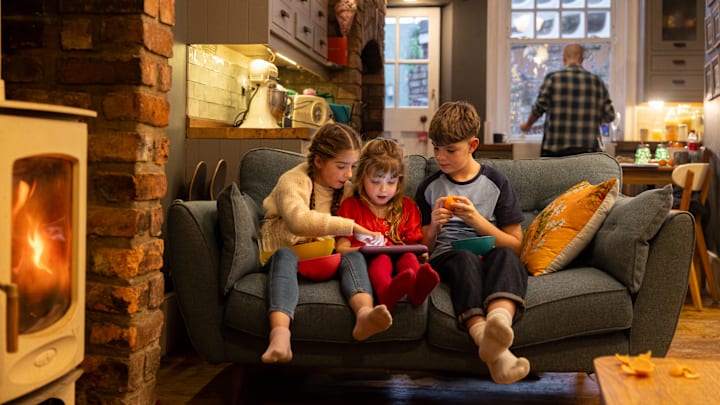Few things feel more comforting than curling up beside a crackling fire on a cold night. The smell of burning wood, especially during the chillier seasons, is a nostalgic scent for many.
But here’s the not-so-cozy truth: that charming wood-burning fireplace or stove could be quietly harming your health.
- The Invisible Dangers of Wood Smoke
- Safer Ways to Stay Warm This Winter
- Alternatives to Wood-Burning Appliances
The Invisible Dangers of Wood Smoke
Wood smoke might look harmless, but it’s packed with pollutants. When wood burns, it releases fine particles known as PM2.5, which stands for particulate matter of less than 2.5 micrometers in diameter (that’s about 30 times smaller than single strand of human hair). Wood smoke also contains gases like benzene, formaldehyde, and methane. If those gasses sound familiar, it’s because many of them are the same toxins found in cigarette smoke.
That’s why doctors and researchers are increasingly warning that “natural” doesn’t mean safe. Studies show wood smoke exposure is linked to all sorts of health conditions, including asthma, bronchitis, heart disease, cognitive disfunction, and even cancer.
Children, older adults, and anyone with pre-existing conditions are especially vulnerable, but even healthy people can experience symptoms after spending time around wood smoke.
Even if you can’t see or smell it the smoke, you may still be breathing it in. And it isn’t just your home that’s affected, either. Up to 70 percent of smoke from your chimney can seep back into your home (and your neighbors houses, too)—so even if your chimney is working regularly, you and those who live in your vicinity are still exposed [PDF].
You May Also Like ...
- 13 Toasty Tips for Staying Warm in Cold Weather
- 6 Common Fire Hazards Lurking in Your Home (and Simple Ways to Prevent Them)
- You Might Be Surprised at the Number of Smoke Alarms You Need in Your Home
Add Mental Floss as a preferred news source!
Safer Ways to Stay Warm This Winter
If you still want to enjoy your wood-burning fireplace, there are ways to make it a little safer. The Environmental Protection Agency (EPA) recommends:
- Burning only dry, seasoned wood that’s been split and stored for at least six months.
- Keeping your chimney clean and inspected annually to prevent buildup and backdrafts.
- Installing a tight-fitting fireplace door instead of an open screen.
- Use an EPA certified fireplace or wood burning stove that meets current building, health, and environmental codes.
- Ventilating the room well: crack a window or use an exhaust fan to help air circulate.

And always skip the shortcuts: never burn garbage, cardboard, or treated wood, which can release additional toxic chemicals.
Consider investing in an air quality monitor that can track the amount of PM2.5 circulating in the air. If the air quality in your house or yard tanks when you have a fire going, that’s a good indication that your wood burning habit is a cause for concern.
Alternatives to Wood-Burning Appliances
Those who love the ambiance but hate the health risks can consider switching to a pellet stove, electric fireplace, or gas insert. Pellet stoves use compressed wood pellets that burn more cleanly and efficiently than traditional logs; electric or gas options eliminate smoke entirely.

Swapping your logs for a cleaner alternative means you can still have all the cozy vibes without the coughs, the carcinogens, or the guilt. Some cities even offer wood-burning changeout initiatives to assist homeowners looking to make the switch.
